
During Valentine’s Day we usually hear about flowers, love, and hearts! Use the holiday to teach your students more about this "love" organ. For example, people used to think that their emotions came from their hearts. This may have been because the heart beats faster when a person is scared or excited. Now we know that emotions come from the brain and the brain tells the heart to speed up.
The Heart Is a Muscle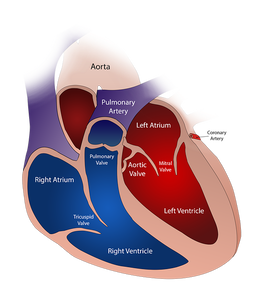
The heart is located slightly left of the center the chest and it's about the size of a fist. The heart sends blood around the body which provides it with the oxygen and nutrients it needs. Blood also carries away waste.
The heart is like two pumps that work together. The right side of the heart receives blood from the body and pumps it to the lungs. The left side of the heart receives blood from the lungs and pumps it out to the body. Before each beat, the heart fills with blood. Then it contracts to push the blood along the circuit. Parts of the Heart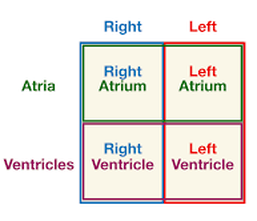
The heart is made up of four different chambers. There are two chambers on each side of the heart. The chambers on top are called the atria. The atria are the chambers that fill with the blood returning to the heart from the body and lungs. The heart has a left atrium and a right atrium.
The chambers on the bottom are called the ventricles. The left and right ventricle push the blood out to the body and lungs. Running down the middle of the heart is a thick wall of muscle called the septum. The septum separates the left and the right side of the heart. The atria and ventricles work together. The atria fill with blood, then push the blood into the ventricles. The ventricles then squeeze the blood out of the heart. While the ventricles are squeezing, the atria refill and get ready for the next contraction. There are also four valves inside the heart. Blood can only move in one direction through the valves. The mitral and tricuspid valves let blood flow from the atria to the ventricles. The aortic and pulmonary valves control the flow of blood leaving the heart. These valves work together to prevent the backward flow of blood. Lub-Dub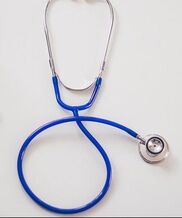
A stethoscope is used to listen to the heart muscle. A healthy heart makes a lub-dub sound with each beat. This sound comes from the valves closing within the heart.
The first sound (the lub) happens when the mitral and tricuspid valves close. The next sound (the dub) happens when the aortic and pulmonary valves close after the blood has been squeezed out of the heart. The Pulse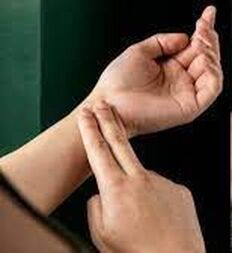
Your pulse can show you that your heart is working. You can find your pulse by lightly pressing on the skin anywhere there's a large artery running just beneath. Two good places to find it are on the side of your neck and the inside of your wrist, just below the thumb.
A pulse feels like a small beat under the skin. Each beat is caused by the contraction of your heart. To find out your heart rate, use a watch with a second hand and count how many beats you feel in 1 minute. When you are resting, you will probably feel between 70 and 100 beats per minute. During exercise, the body needs a lot more oxygen-filled blood. The heart pumps faster to achieve this. If you run in place or jump rope you can feel your heart pounding in your chest. Keep Your Heart Happy
To help keep the heart happy and healthy its a good idea to exercise for 30-60 minutes daily, not smoke, eat a variety of healthy foods, avoid foods high in saturated and trans fats, eat at least five servings of fruits and vegetables each day, avoid sugary food and drinks, and don’t have too much Valentine’s Day Candy!!
Build a Stethoscope & investigate your own heart!!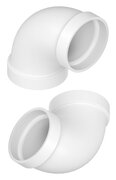
The stethoscope is one of the most common diagnostic tools for any medical professional. Healers have been listening to patients’ bodies for many years, but the concept of the stethoscope didn’t emerge until 1816. French physician Rene Laennec needed to listen to a patient’s chest, so he rolled a long piece of paper into a tube—and realized how much better he could hear using the device than by placing his ear directly against the patient’s body. Laennec coined the term "stethoscope," the Greek words stethos (chest) and skopein (to view or see). Since that time, stethoscopes have improved.
Your students can make a very simple version of their own using aquarium tubing, PVC pipe 90° elbows, duct tape, and a stopwatch. Watch my video for how is done:
After students build their stethoscope have them describe the difference in the sound of the heart while at rest versus after exercise.
Here is an organized version of theBuild Your Own Stethoscope activity for you to use in your classroom.
2 Comments
|
AuthorGertrude Katz has spent over 30 years teaching K-12 public school students all major subjects. She has taught biology and education at the college level. The majority of her career has been spent instructing biology at the secondary level. Categories
All
|
 RSS Feed
RSS Feed